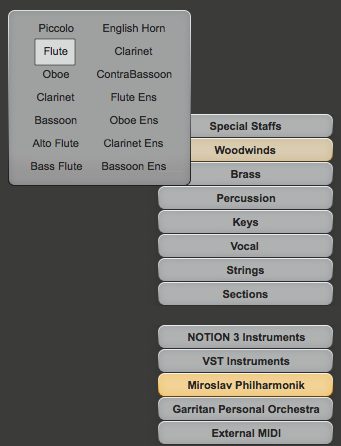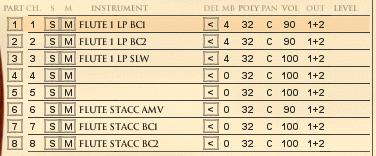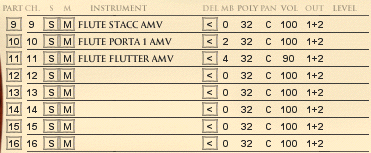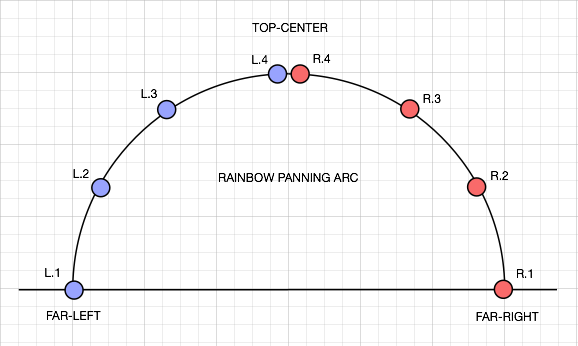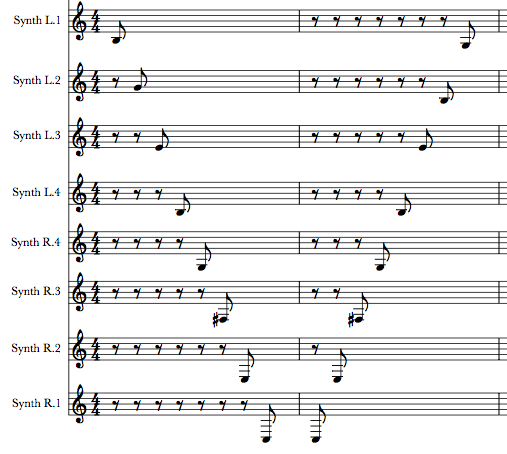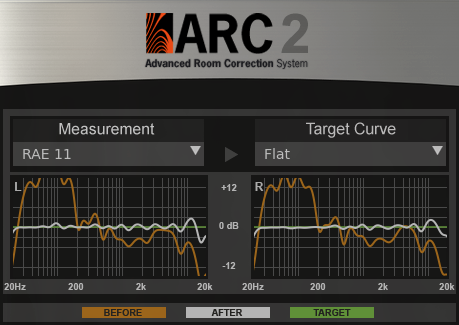carlosetmenezes wrote:Thanks Surfwhammy,
I will read and try to understand, it is now clear to me the high memory consumption of Notion4.
In Philhamonik Miroslav using the Combi. Example riding a Combi wind instruments as I do to have all my music instruments distributed in the Notion4.
Thanks and greetings.
Glad to help!  EXPERIMENT
EXPERIMENTThis might be what you already are doing, but if not then as an experiment, you might try having one COMBI for woodwinds; one COMBI for brass; one COMBI for strings; and so forth, where if necessary you can have two COMBIs for instruments that require more articulations. This will reduce the number of instances of the Miroslav Philharmonik engine that need to be loaded and managed by jBridge; and this might help. Since you are using the VSTi virtual instrument version of Miroslav Philharmonik, I think that NOTION 4 will use its default rules, which might be more optimal although perhaps not so detailed . . .
However, to get the most realistic sound I think it works best to use a specific sampled articulation when it exists rather than to use computed articulations, where if there is a legato violin sample set, then use it rather than doing some type of computed legato. The difference is that when there is a sample set for the articulation, the real musician was recorded playing the notes in the specific articulation, which then was digitized, and this will be the more realistic sound possible . . .
AN OVERVIEW OF WHAT NOTION 4 DOESNOTION 4 is doing a lot of work, but there also is a lot of work done by VSTi virtual instruments and their audio engines, so it is not just a matter of NOTION 4 needing a lot of resources . . .
This is something made clear to me when I started using MachFive 3 (MOTU) and some of its heavily sampled instruments like the Telematic electric guitar, where the complete version has 9,562 keygroups and takes approximately 55 seconds to load on the 2.8-GHz 8-core Mac Pro with 20GB of memory and 7200 RPM internal hard drives with wide, high-bandwidth I/O buses . . .
For practical purposes, NOTION 4 is the controller application and it has two primary roles during playback:
(1) translate music notation into MIDI notes and commands . . .
(2) coordinate and manage the audio generated by the various VSTi virtual instrument engines . . .
NOTION 4 also has secondary roles:
(3) it handles the real-time visual display, but when resources are tight it skips doing visual updates to conserve computing capabilities . . .
(4) it handles keyboard and mouse interactions, which includes NTempo and other features . . .
When there are External MIDI staves and when there is a ReWire 2 session, there are two more primary roles added to the list:
(5) coordinate and manage MIDI interactions with external MIDI devices (real or virtual) . . .
(6) participate in real-time ReWire 2 interactions . . .
[
NOTE: There is a lot of stuff happening behind the scenes in a ReWire session, as is evident in the following diagram of a running ReWire sesion, which is from the public area for ReWire at the Propellerhead Software website . . . ]
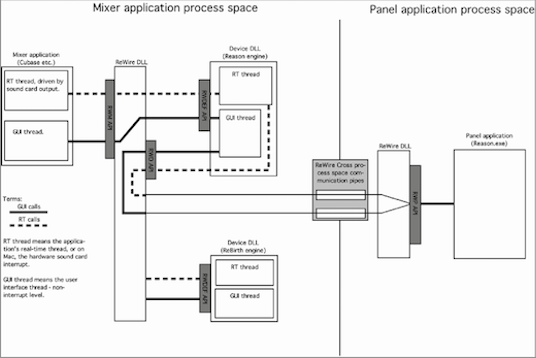 Diagram of a Running ReWire SessionTHOUGHTS
Diagram of a Running ReWire SessionTHOUGHTSIt is all heavy in one way or another, where "all" maps to NOTION 4, AU and VSTi virtual instruments, AU and VST effects, DAW application, MIDI devices, ReWire, and so forth and so on . . .
When everything was running in 32-bit mode with NOTION 3, the upper limit on the Mac was approximately 50 VSTi virtual instruments with only one part per instrument and no VST effects plug-ins, but the practical limit was approximately 20 VSTi virtual instrument staves, where each staff had its own VSTi virtual instrument rather than one VSTi virtual instrument providing the audio for several staves . . .
[NOTE: The importance of using COMBIs, which in Kontakt 5 and MachFIve 3 are called "Multis", is that there is only one instance of the respective engine, where in contrast if you allow only one part per instance and one instance per staff, then for 20 staves you have 20 instances of the engine running. Everything depends on the specifics, but intuitively it probably is more efficient to have few instances of the engines, since one instance of an engine can handle several different parts, where for COMBIs the upper limit is 16 parts but for Kontakt 5 the upper limit is 64 parts of instruments
Intuition suggests that the limits should be less stringent when everything is running in 64-bit mode, but based on my observations I continue to use the same limits and actually lowered the limit to 10 staves per NOTION 4 score when there are one or two "heavy" MachFive 3 (MOTU) VSTi virtual instruments (like the Telematic, Jbass, Upright Bass, and some of the pianos) . . .
What I find is that instead of the limits decreasing and mapping to fewer limits, what happens is that in 64-bit mode everything sounds better and runs smoother, hence instead of changing the overall system I developed when everything was running in 32-bit mode, I continue to use the same system but now it sounds better and works better, which is fine with me . . .
Another benefit of everything running in 64-bit mode is that now I usually do all the work in a ReWire 2 session with Digital Performer 8 (MOTU) as the ReWIre2 host controller and NOTION 4 and Reason 7 (Propellerhead Software) as ReWire 2 slaves, where I do the AU and VST effects in the DAW application rather than in NOTION 4, since (a) this focuses NOTION 4 on doing the virtual instrument audio generation based on controlling and managing the various VSTi virtual instrument engines and (b) this focuses the DAW application (Digital Performer 8) on producing and mixing, which includes doing advanced signal processing and special effects via AU and VST effects plug-ins, although there is a bit of overlap in the Reason 7 part of the system, since Reason 7 does everything, except not using music notation unless one of the Reason 7 synthesizers is being controlled by music notation on a NOTION 4 External MIDI staff . . .
So long as I do not zone-out and forget one of the handful of odd rules (like never rewinding the transport to the first beat of the first measure in a ReWire 2 session when Digital Performer 8 is the ReWire 2 host controller, since this crashes Digital Performer 8), everything is stable for two to four hours, and possibly longer, but I save everything frequently and quit and restart the applications every two to four hours to clear all the memory buffers and to reset all the global stuff, which usually takes just a few minutes, during which time I take a break or make a new pot of coffee . . .
For all practical purposes, this is the digital equivalent of the analog system that Les Paul devised in the late-1940s and early-1950s where songs are composed, recorded, and produced in
layers; and it works very nicely once you do it a few times and begin to understand the various rules, which is fabulous . . .
CLASSIC TRACKS: Les Paul & Mary Ford “How High The Moon” (SOS [Sound on Sound, January 2007])"How High The Moon" (Les Paul & Mary Ford) ~ YouTube music videoFabulous! 
